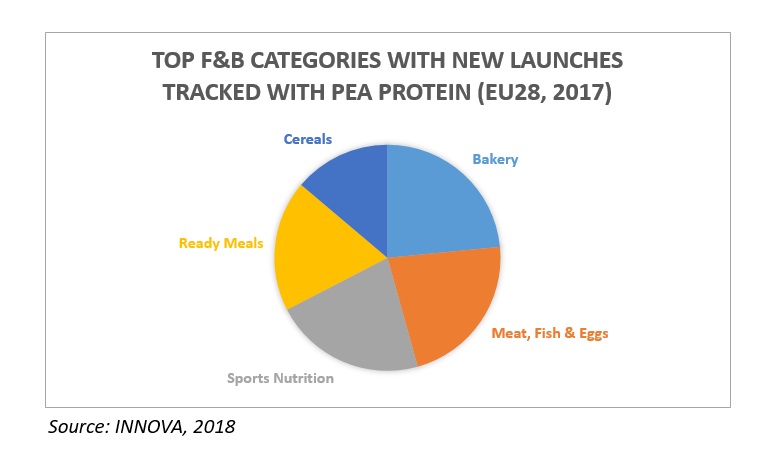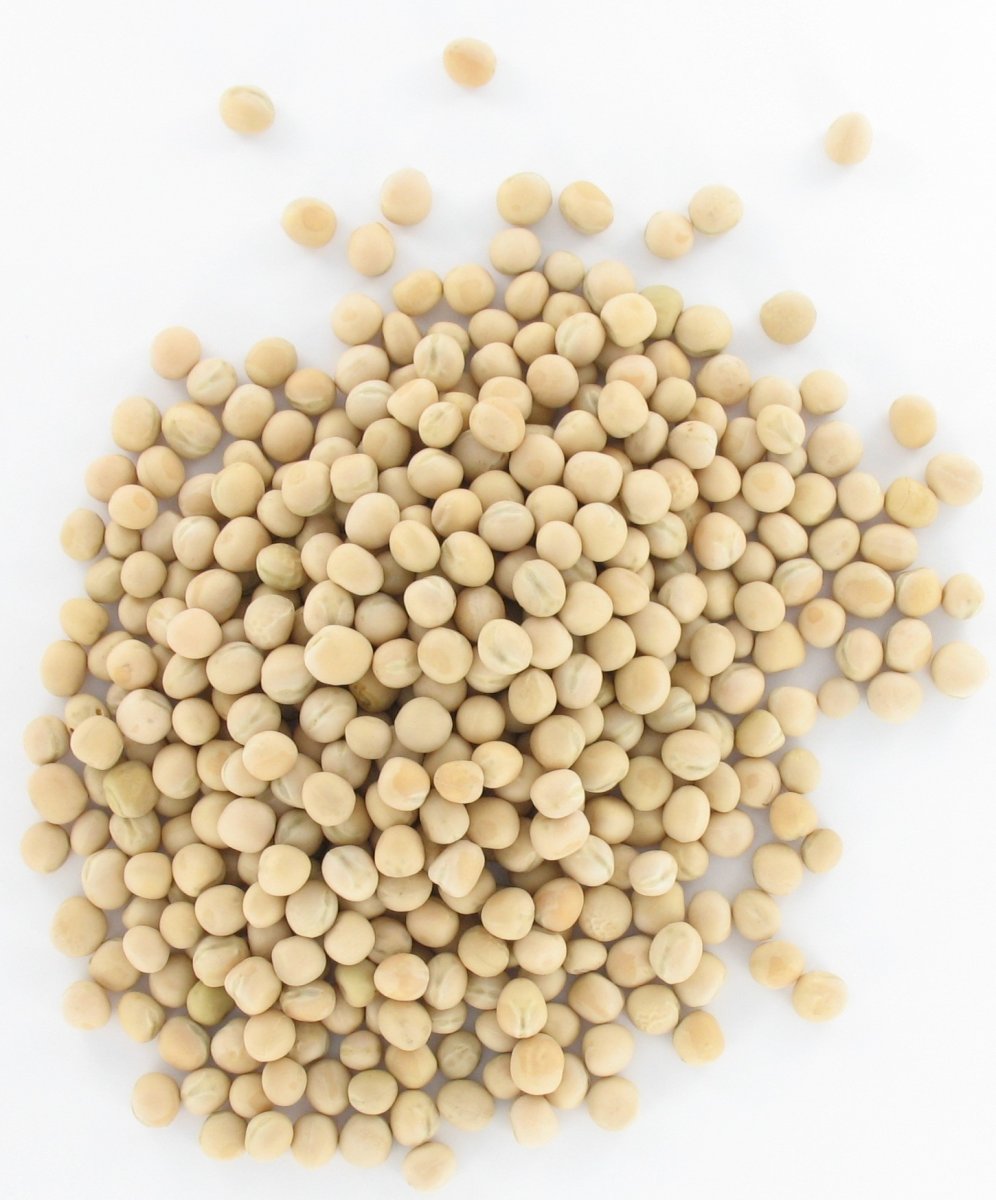Mainly made from peas produced in Europe and North America, pea protein is extracted from yellow pea (Pisum sativum) which represents a sustainable protein source and an alternative to the consumption of meat for the coming years.
In the current plant-based protein market, pea protein is the best alternative: for its nutrition, functionalities and sustainability. Looking at new food product launches in Europe containing pea protein, its popularity on the market is evident: only 7 new products in 2007 containing pea protein compared to almost 600 new products in 2017. Pea protein is largely used in bakery (mainly bread, with a 42% increase of new products in 5 years), meat, fish & eggs and sports nutrition. Also ready meals and cereals were in the top food and beverage product launches in 2017 containing pea protein (INNOVA, 2018). Interestingly, the dairy category is booming with an increase of 90% of product launches in 5 years.


(Picture: yellow peas)
Pea protein is obtained by a process including dry and liquid phases. First, during a dry process, the outer shell of the pea (essentially consisting of insoluble fibres), is removed by mechanical action. After milling, a flour containing soluble fibres, starches and proteins is obtained. Being water soluble, pea proteins are therefore separated from fiber and starch by wet filtration and centrifugation. From this solution, there are two methods to obtain the protein isolate:
One is to precipitate the proteins to their isoelectric point at very high temperature. It gets a thermo-coagulated protein to be used in animal nutrition.
The second one process is to precipitate the protein to its isoelectric point, and then solubilizing the dry spray. It gets a white powder of purified protein that can be used in human nutrition.

(Picture : purified pea protein isolate)
The obtained isolate has a protein content of about 85 to 90%. It is marketed as such or can be modified to optimize its technical or nutritional properties through extrusion process. This allows to get pea protein crisp or texturized.
Pea protein is first used for its high protein content (aminogram covers 95% of the daily needs in essential amino acids of an adult) and good digestibility that make it interesting for the nutrition, particularly for child nutrition, elderly, food without lactose, vegetarianism, organic food...
Many lines of products for sports (protein supplementation) and clinical nutrition (support of malnutrition) use pea protein in their formulation.
Moreover, emulsifying properties, good solubility, outstanding dispersion in water, reaction of Maillard (non-enzymatic Browning), easy mixing, fluidity of powder... are all features of pea protein that are sought by food industries. It is used in bakery, pastry, confectionery, dairy products and desserts. Its sensory profile and texturized shape give it ease of use.
In addition, in culinary products, pea protein displays very good meat binding properties (meat extender) or even texture (meat substitute) in different applications (meats, steaks, nuggets, sauces, dishes cooked...).